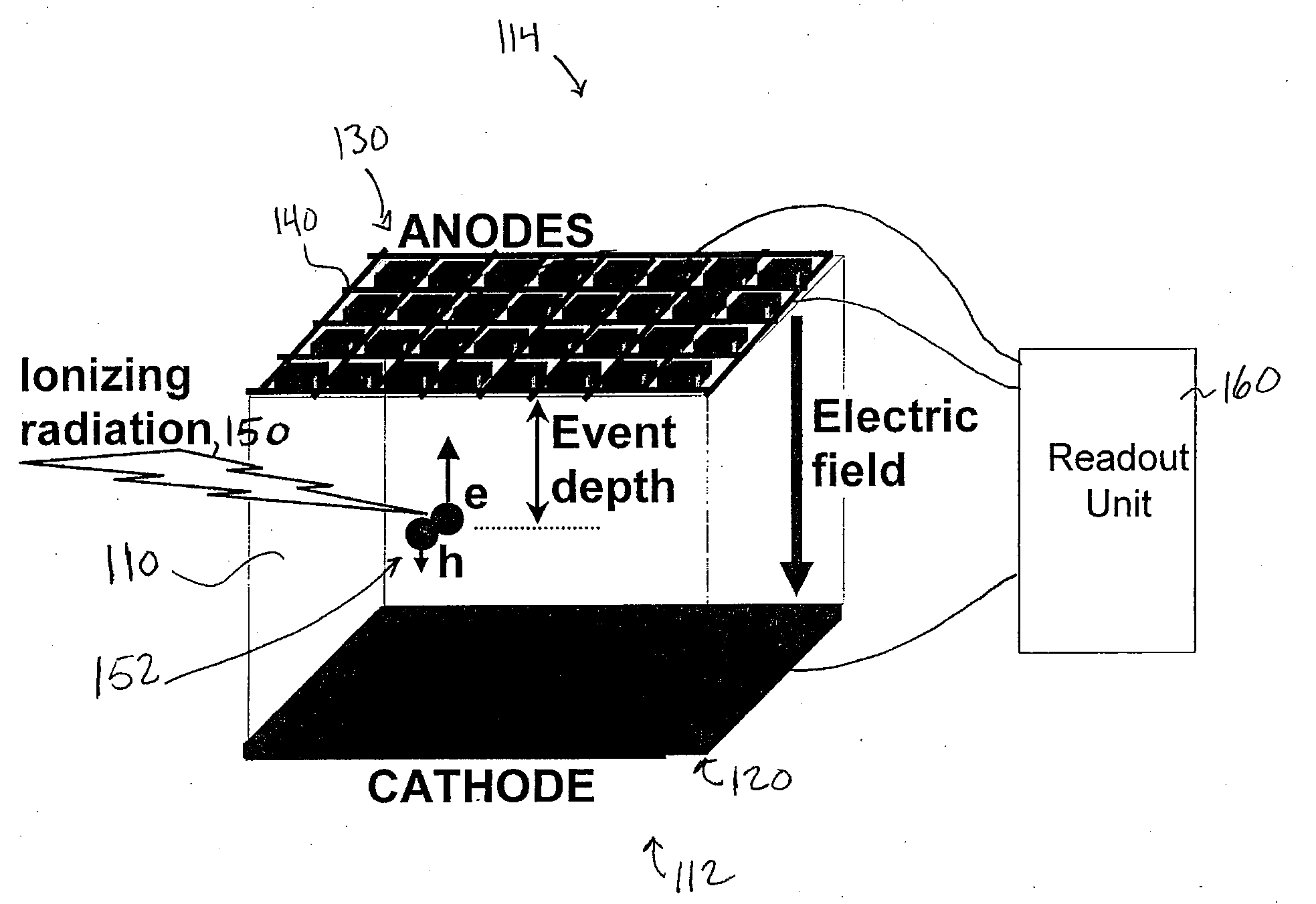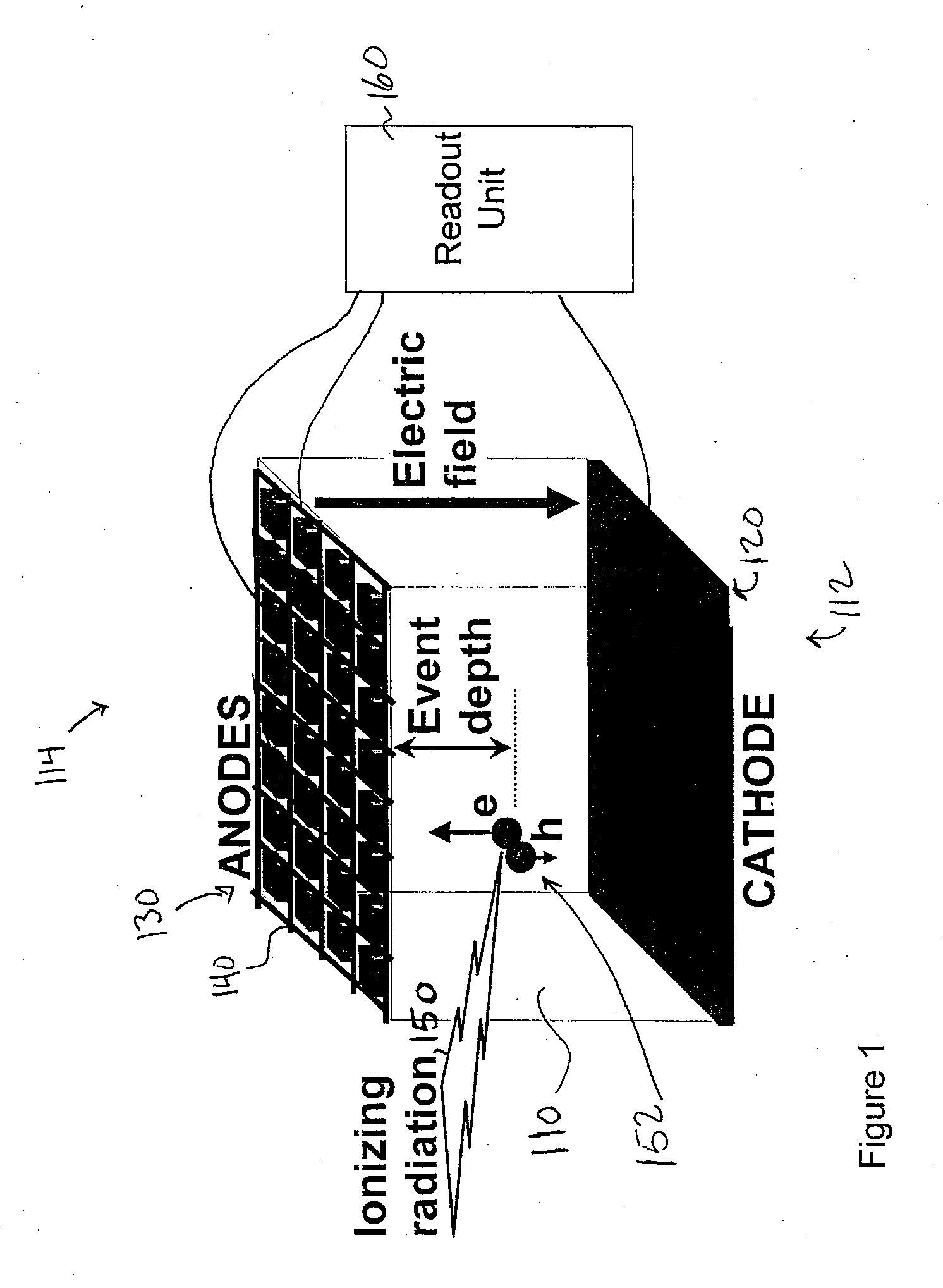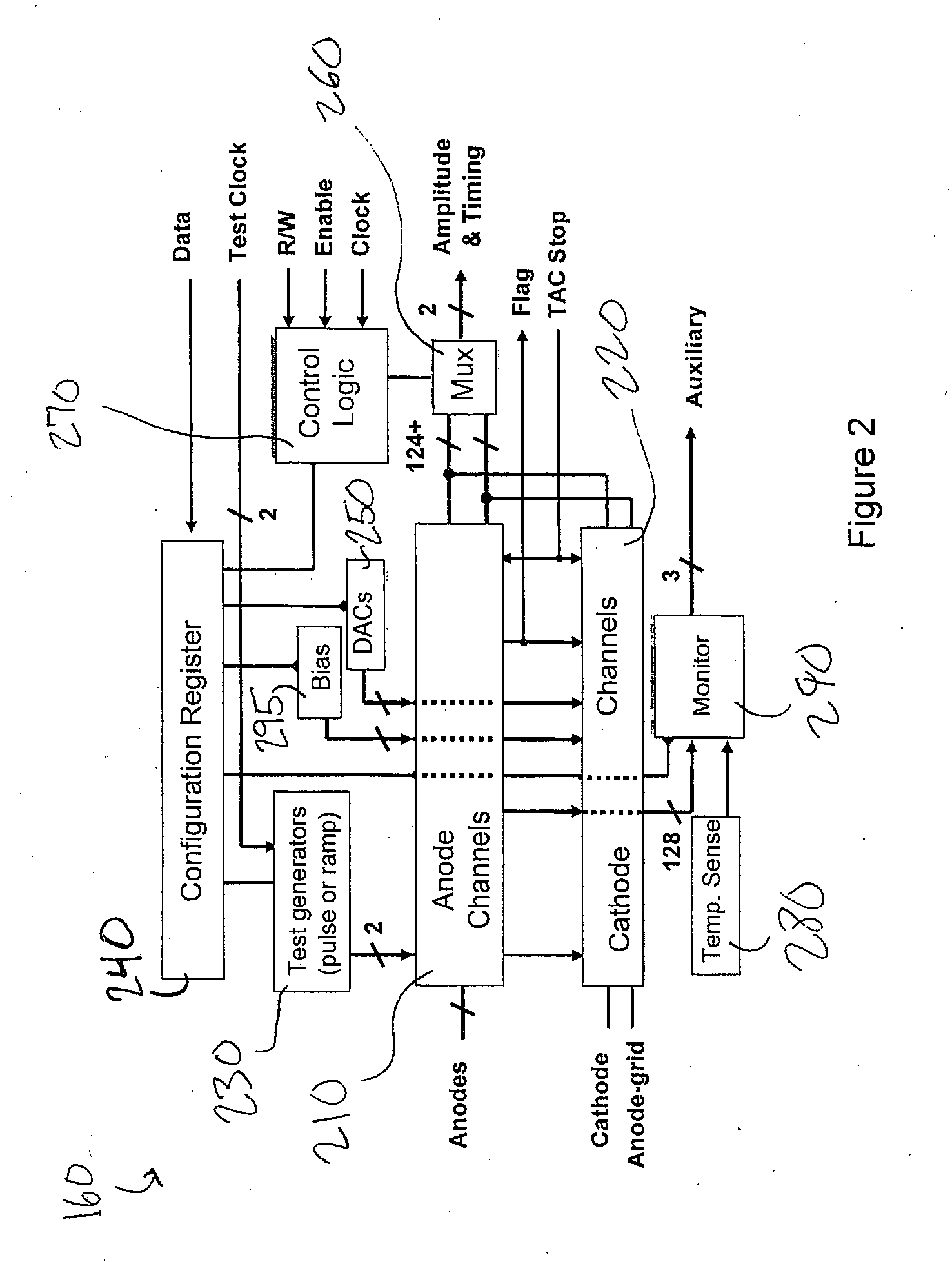Method and Apparatus for the Measurement of Signals from Radiation Sensors
a radiation sensor and signal technology, applied in the direction of radiation intensity measurement, instruments, x/gamma/cosmic radiation measurement, etc., can solve the problems of poor mobility, large non-uniformity, and strong limited spectral resolution of these materials
- Summary
- Abstract
- Description
- Claims
- Application Information
AI Technical Summary
Problems solved by technology
Method used
Image
Examples
Embodiment Construction
[0030]The preferred embodiments of the present invention include readout units for 3D position-sensitive radiation detectors having low-noise charge amplification, and filtering, and that can perform measurements of amplitude and timing on signals from a cathode, anodes, and / or anode grid. The readout units can be configured to read-out signals from pixilated CZT sensors, characterized by an array of anodes and at least one, cathode. In response to an ionizing event, the readout units measure a peak amplitude and relative timing from anodes and at least one cathode. The readout units can be implemented as application specific integrated circuits (ASICs) that can be wire-bonded to a 22×22 mm2 interposer, which can be connected to a sensor and which can be used for analog and digital power supplies and signals.
[0031]FIG. 1 depicts an exemplary position sensitive radiation detector 100 (detector 100). The detector 100 can include a detector medium 110, cathode 120, at least one anode, ...
PUM
 Login to View More
Login to View More Abstract
Description
Claims
Application Information
 Login to View More
Login to View More - R&D
- Intellectual Property
- Life Sciences
- Materials
- Tech Scout
- Unparalleled Data Quality
- Higher Quality Content
- 60% Fewer Hallucinations
Browse by: Latest US Patents, China's latest patents, Technical Efficacy Thesaurus, Application Domain, Technology Topic, Popular Technical Reports.
© 2025 PatSnap. All rights reserved.Legal|Privacy policy|Modern Slavery Act Transparency Statement|Sitemap|About US| Contact US: help@patsnap.com



